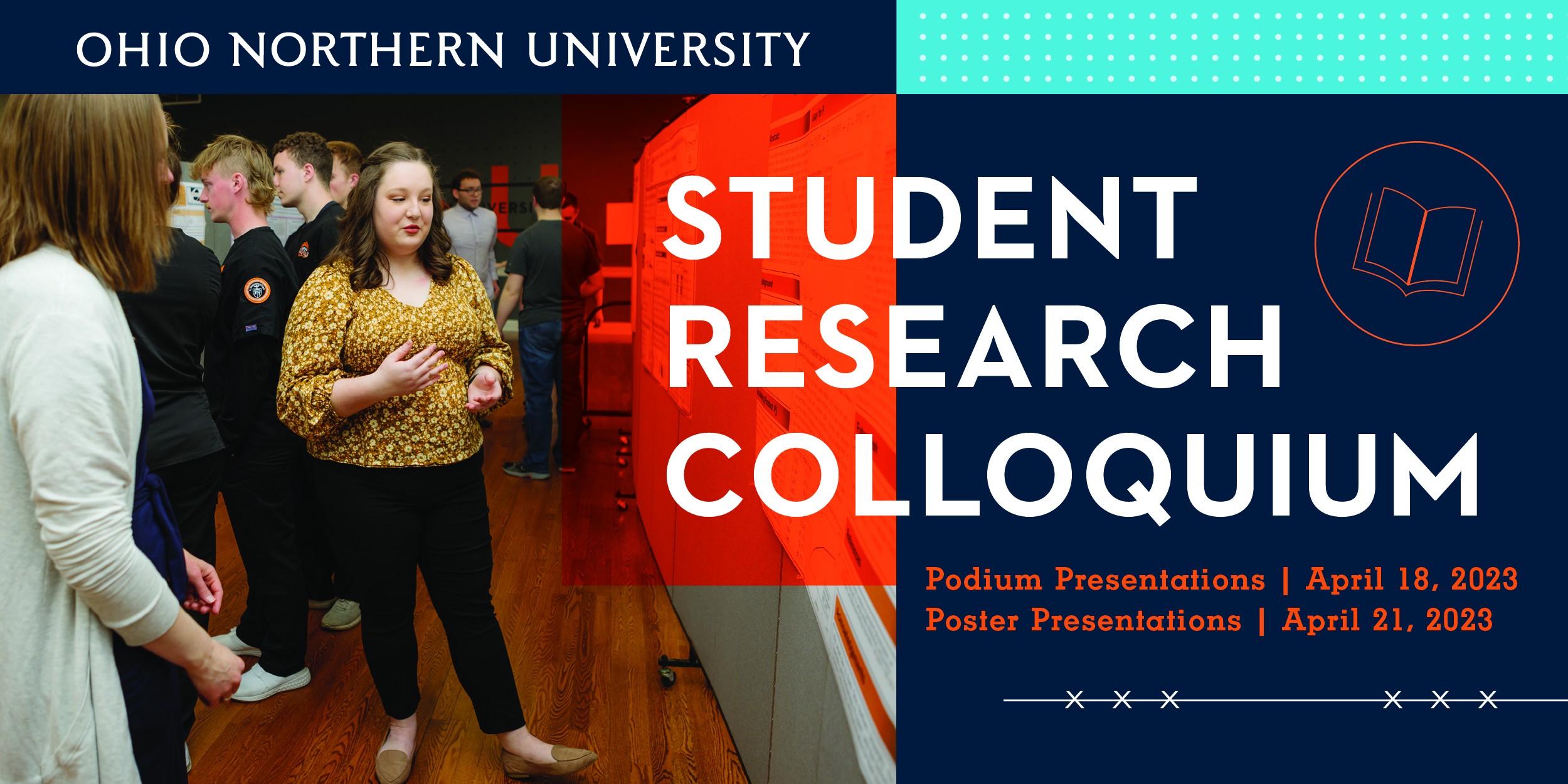Oakwoods Nature Preserve: understanding biodiversity in a restored wetland ecosystem
Advisor(s)
Elizabeth Tristano1, Katherine L. Krynak1, Leslie A. Riley1, Robert G. Verb1
Confirmation
1
Document Type
Poster
Location
ONU McIntosh Center; McIntosh Activities Room
Start Date
21-4-2023 12:00 PM
End Date
21-4-2023 12:50 PM
Abstract
The drainage of thousands of acres of Ohio wetlands for farmland during the 19th and 20th centuries is being slowly reversed via restoration efforts as the importance of wetland ecological services becomes more evident. However, construction of wetlands is often lacking the use of best practices and standardization of post-construction surveys necessary for assessing the success of the restoration effort. We designed and implemented a standardized biodiversity survey examining communities of benthic bacteria, periphyton, macroalgae, and macroinvertebrates across forty-three wetland pools one year post construction at Oakwoods Nature Preserve in Hancock Co. Ohio. We utilized MiSeq sequencing of benthic bacteria and performed light microscopy sorting and identification of the algae and macroinvertabrates. Statistical assessment is currently underway. We will use multivariate analyses to assess how factors such as pool depth, hydroperiod, physical chemistry, and distance to biological source populations influences pool biodiversity. Improving our understanding of the influence these parameters have on constructed wetland biodiversity over time will provide best practice methodologies for the continued success of wetland restoration efforts across the state.
Recommended Citation
Clark, Kelli; Sallee, Ashley; Waite, Alex; Zima, Nathan; Carroll, Chad; Tristano, Elizabeth; Krynak, Katherine; Riley, Leslie; and Verb, Robert, "Oakwoods Nature Preserve: understanding biodiversity in a restored wetland ecosystem" (2023). ONU Student Research Colloquium. 25.
https://digitalcommons.onu.edu/student_research_colloquium/2023/posters/25
Restricted
Available to ONU community via local IP address and ONU login.
Oakwoods Nature Preserve: understanding biodiversity in a restored wetland ecosystem
ONU McIntosh Center; McIntosh Activities Room
The drainage of thousands of acres of Ohio wetlands for farmland during the 19th and 20th centuries is being slowly reversed via restoration efforts as the importance of wetland ecological services becomes more evident. However, construction of wetlands is often lacking the use of best practices and standardization of post-construction surveys necessary for assessing the success of the restoration effort. We designed and implemented a standardized biodiversity survey examining communities of benthic bacteria, periphyton, macroalgae, and macroinvertebrates across forty-three wetland pools one year post construction at Oakwoods Nature Preserve in Hancock Co. Ohio. We utilized MiSeq sequencing of benthic bacteria and performed light microscopy sorting and identification of the algae and macroinvertabrates. Statistical assessment is currently underway. We will use multivariate analyses to assess how factors such as pool depth, hydroperiod, physical chemistry, and distance to biological source populations influences pool biodiversity. Improving our understanding of the influence these parameters have on constructed wetland biodiversity over time will provide best practice methodologies for the continued success of wetland restoration efforts across the state.

